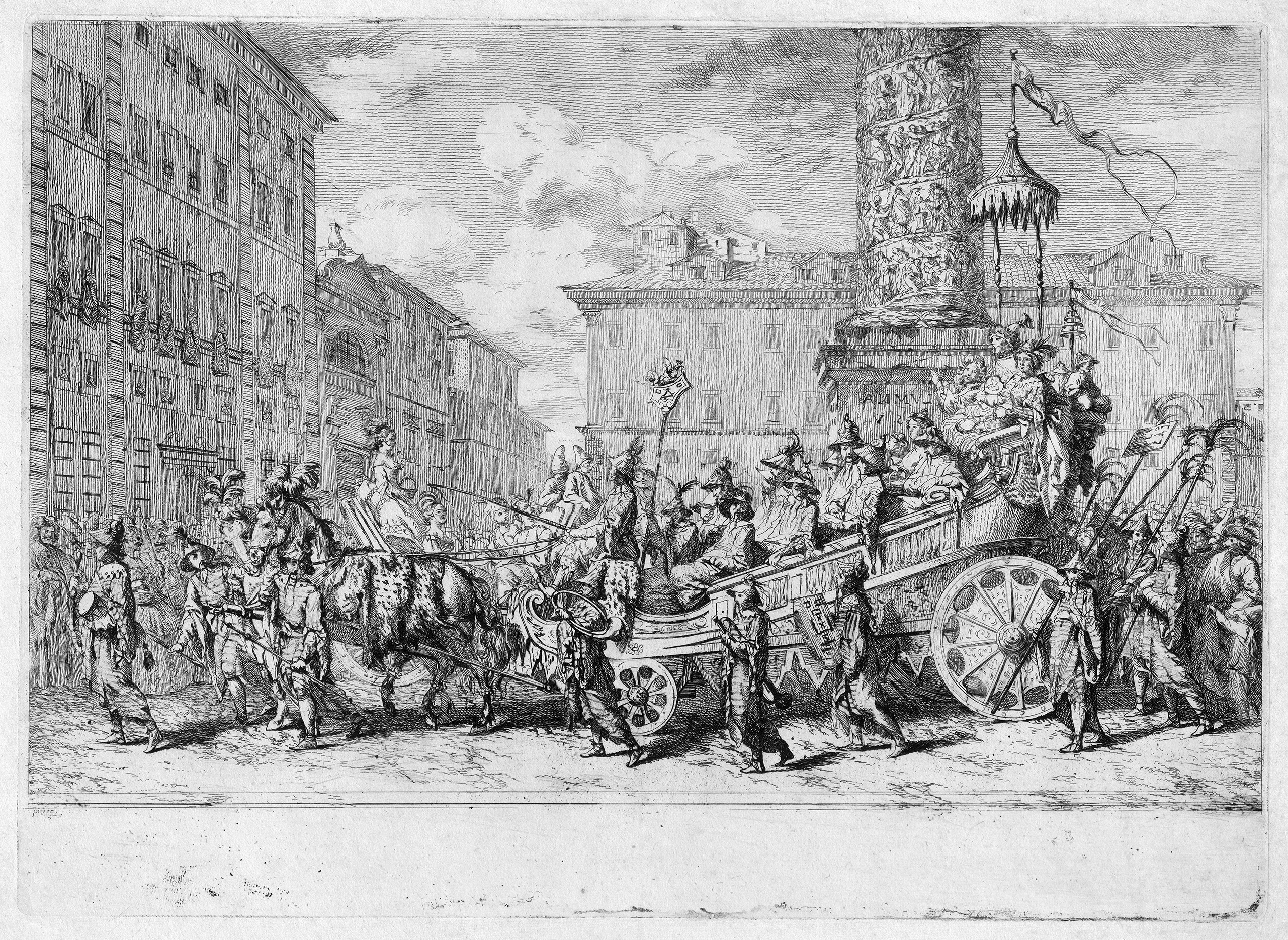Loading the page ...
Jean-Baptiste Marie Pierre
(1713–1789, Paris)
The Chinese Masquerade. Etching. 31 x 43.1 cm. 1735. Le Blanc 25; Portalis-Béraldi III, p. 310; Baudicour I, 27.
This brilliant, briskly executed etching shows a carnival procession organised by the French pensionnaires in Rome in 1735. A splendid two-horse carnival float carrying art students dressed in fanciful Chinese dress is passing by the Column of Marcus Aurelius on Piazza Colonna. The students are escorted by others of their number on foot carrying drums, trombones and lances. Pierre has observed the noisy, turbulent scene with great relish. His main focus is naturally on the exotically dressed protagonists, although the astonished Roman public is also depicted with a keen eye for narrative effect. Using light strokes the artist has effortlessly rendered the buildings along the Piazza Colonna in a realistic yet evocative, atmospheric manner. Light billowing clouds brighten up the sky.
Jean-Baptiste Pierre, who was later held in great esteem in Paris as a history painter and etcher, was trained by Charles-Joseph Natoire and won the prestigious Prix de Rome in 1734. From 1735 to 1740 Pierre lived and worked as a pensionnaire at the Académie de France in Rome. The Chinese Masquerade is his undisputed masterpiece as an etcher and underlines the special position he occupied in this field, given that relatively little attention was paid to printmaking techniques in the Académie’s teaching programme. Pierre dedicated the etching to the Duke of Saint-Aignan, the French ambassador in Rome. The French students’ procession had quite an impact on the general public at the time and it can be assumed that Pierre’s etching elicited a comparable response. Nevertheless, only a few impressions of the work have survived. After his return to Paris, Pierre produced a modest printed oeuvre, but none of his works can match this delightfully evocative depiction of the carnival in Rome.
A superb, lively and contrasting impression from the partly uncleaned plate, before letters. The artist’s name is visible at the bottom left in very fine writing; before the world “sculp.”; the lower framing line still partly interrupted. Before the reinforcing of the cross on the roof of the church façade on the left. We were unable to trace any other impression of this earliest, unrecorded state, which is not available in the Bibliothèque Nationale in Paris either.
